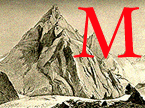 any Victorian writers of fiction and non-fiction described the havoc wreaked upon urban centers by railways, such as driving up real estate prices, devastating working class housing, and adding to urban congestion. Novelists also protested the effects of the new transportation technology upon the countryside, but here the protests seem aimed more at some preserving some sort of primal innocence in places in which as Gerard Manley Hopkins put it,
any Victorian writers of fiction and non-fiction described the havoc wreaked upon urban centers by railways, such as driving up real estate prices, devastating working class housing, and adding to urban congestion. Novelists also protested the effects of the new transportation technology upon the countryside, but here the protests seem aimed more at some preserving some sort of primal innocence in places in which as Gerard Manley Hopkins put it,
Generations have trod, have trod, have trod;
And all is seared with trade; Bleared, smeared with toil;
And wears man's smudge and shares man's smell: the soil
Is bare now, nor can foot feel, being shod. ["God's Grandeur"]
The objections all center on the charge, now hard to take seriously, that laying the railway tracks through a landscape in some way irremediably chopped and divided it — as if the English countryside were not already criss-crossed by centuries-old fences and stone walls. In George Meredith's Diana of the Crossways, for example, the heroine objects to the way the railways cut through the landscape, expressing
her personal sorrow at the disfigurement of our dear England. . . Those railways! When would there be peace in the land? Where one single nook of shelter and escape from them! And the English, blunt as their senses are to noise and hubbub, would be revelling in hisses, shrieks, puffings and screeches, so that travelling would become an intolerable affliction. 'I speak rather as an invalid,' she admitted; 'I conjure up all sorts of horrors, the whistle in the night beneath one's windows, and the smoke of trains defacing the landscape; hideous accidents too. They will be wholesale and past help. Imagine a collision! I have borne many changes with equanimity, I pretend to a certain degree of philosophy, but this mania for cutting up the land does really cause me to pity those who are to follow us. They will not see the England we have seen. It will be patched and scored, disfigured . . . a sort of barbarous Maori visage — England in a New Zealand mask.
And, she continues, "I love my country. I do love quiet, rural England. Well, and I love beauty, I love simplicity. All that will be destroyed by the refuse of the towns flooding the land." Ah, it's all those members of the lower orders freed from their urban settings.
In the same novel a countryman complains:
"Once it were a capital county, I say. Hah! you asks me what have happened to it. You take and go and look at it now. And down heer'll be no better soon, I tells 'em. When ah was a boy, old Hampshire was a proud country, wi' the old coaches and the old squires, and Harvest Homes, and Christmas merryings. — Cutting up the land! There's no pride in livin' theer, nor anywhere, as I sees, now."
"You mean the railways."
"It's the Devil come up and abroad ower all England!" exclaimed the melancholy ancient patriot.
Trollope made a somewhat different point in The Three Clerks when he claimed that "it is very difficult nowadays to say where the suburbs of London come to an end, and where the country begins. The railways, instead of enabling Londoners to live in the country, have turned the country into a city. London will soon assume the shape of a Hammersmith, will be the nucleus, and the various railway lines will be the projecting rays. [Ch 3 "The Woodwards"] The coming of the railway marks a watershed, a turning point and a border not only between places but between times as well. Therefore to locate his story of Castle Richmond in a time before modernity arrives, Trollope's narrator tells us that "Castle Richmond stands close upon its banks, within the Mallow and Killarney railway now passes, but which some thirteen years since knew nothing of the navvy's spade, or even of the engineer's theodolite."
References
Kellett, John R. Railways and Victorian Cities. London: Routledge & Kegan Paul, 1979; Toronto: U. of Toronto Press, 1979.
The essential book for anyone who wants to learn about the relations of Victorian railways to contemporary government, industry, finance, urban life, and so on, Kellett's volume is packed with quotations from primary sources, including parliamentary reports and contemporary periodicals; it also has valuable maps and illustrations [GPL].
Related Materials
- Railways and Victorian Literature — An Introduction
- Railways in Victorian Fiction — The Effect upon the City
Last modified 26 December 2005